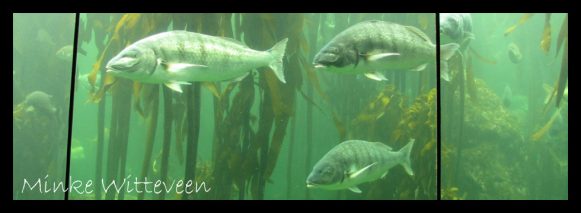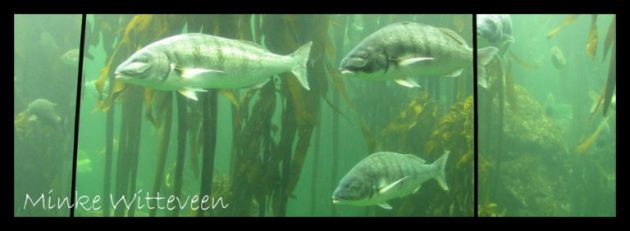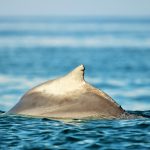White steenbras

The white steenbras Lithognathus lithognathus is a slow-growing, long-lived, late maturing, and estuarine-dependent species endemic to South Africa. White steenbras is an important recreational and subsistence shore and estuarine fishery species, particularly in the southern and south-eastern coastal regions of South Africa. They can attain 25-30 years of age, and grow over 130cm in length and 25kg in weight.
They are dependent upon estuaries during their interesting lifecycle. Mature breeding individuals undergo an annual spawning migration to aggregate from July to August off a few estuaries along the Transkei coast. Eggs and larvae will slowly drift southwards after being spawned close inshore, and after metamorphosis, at 1.8-5cm total length, they will enter into estuaries along the Southeastern, Southern, and Southwestern Cape.
White steenbras juveniles have an obligatory estuarine-dependent phase, where they need to enter an estuary during September to November for their continued survival and development. They will inhabit an estuary for definitely one but up to two or three years where they feed on annelids (segmented worms), algae, copepods (tiny crustaceans), ostracods (seed shrimp), and brachyura (decapod crustaceans). Late juveniles (up to 40cm fork length) will inhabit the surf zone, while sub-adults (40-50cm fork length) are semi-resident in the surf zone and will start venturing out up to 400km from the estuary.
Individuals >50cm fork length will extend their range into deeper water up to 25m deep, although most individuals will remain resident in the surf zone. The adult diet consists primarily of polychaetes (segmented worms), crustaceans, molluscs, mysids (shrimp-like crustaceans), and echinoderms. Sexual maturity is reached at roughly 65cm fork length and they will undertake the annual spawning migration. Unfortunately the white steenbras is classified as Endangered according to the IUCN, with overexploitation, climate change, and habitat loss and degradation being the main threats.
Unfortunately, white Steenbras exhibit life history characteristics which make them vulnerable to impacts over all three lift stages. Limited estuary area, habitat destruction through infrastructure development, boating activities, and freshwater abstraction are major threats to shallow water and estuarine habitats. This will have huge impacts on recruitment, as well as population size and structure.
Written by: Minke Witteveen
For further reading:
- Bennett, B.A. 1993. Aspects of the biology and life history of white steenbras Lithognathus lithognathus in southern Africa. South African Journal of Marine Science 13: 83-96.
- Bennett, B.A. 1993. The fishery for white steenbras Lithognathus lithognathus off the Cape coast, South Africa, with some considerations for its management. South African Journal of Marine Science 13: 1-14.
- Mann, B.Q., Buxton, C.D., Pollard, D., Carpenter, K.E. & Iwatsuki, Y. 2014. Lithognathus lithognathus. The IUCN Red List of Threatened Species 2014. Accessed: 2017-05-20. URL: http://www.iucnredlist.org/details/12137/0.



